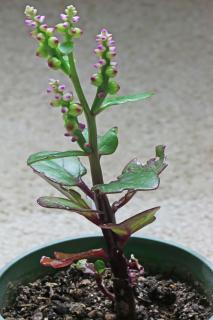

Ha! Basella comes as an amazing diversification after the more classic spinach that most of us are familiar with.
Botanical name – Basella rubra
Common name – Basella, Malabar spinach
Family – Basellaceae
Type – leaf vegetable
Height – ± 5 feet (1.50 to 2 meters)
Planting distance – 16 inches (40cm)
Exposure – full sun
Soil – high levels of humus, soft and loose
Planting – March-April
Harvest – July to September
Basella is an annual vine. Whether it’s planted in the garden or in the vegetable patch, its leaves are delicious both raw and cooked.
Native to Asia, more specifically India, its popular name is Malabar spinach. Though it definitely comes from the tropics, it positively thrives in temperate climates as long as a few rules are followed.
To grow best, basella requires a few basic things:
If the soil in your garden doesn’t exactly match these “best-case” requirements, you’ll have to work on it a bit over the Fall season before being able to plant it in Spring:
 You’ll have to do this in two steps:
You’ll have to do this in two steps:
Smart tip : soak the seeds in plain water for a few hours, this will increase the germination rate.
Just like Spinach, you can also recover stems from your harvest and plant them: they’ll grow roots and new shoots from the nodes, leading to even more vines!
Basella won’t require much care at all. However, it is very vulnerable to drought, so making sure it’s watered often is important.
The main predators of basella are snails, slugs and aphids. They always start off by attacking young leaves. Not only does this weaken the plant, but it also reduces the harvest. As you endeavor to control these pests, try to make the most of natural solutions so that you don’t contaminate the leaves. After all, they’ll end up in your plate!
Depending on when you sowed, you can expect to start harvesting in July and produce a continuous supply of leaves until September. Pick and eat leaves, of course, and also collect young stems, just as you would for chayote. After picking, leaves will keep for a few days in the refrigerator.
The common name for basella (Malabar spinach) isn’t just a coincidence. Indeed, it’s possible to cook and pair the plant exactly as you do spinach, whether raw or cooked. The texture is unique, both crunchy under the tooth and somewhat slimy or gooey as it breaks down.